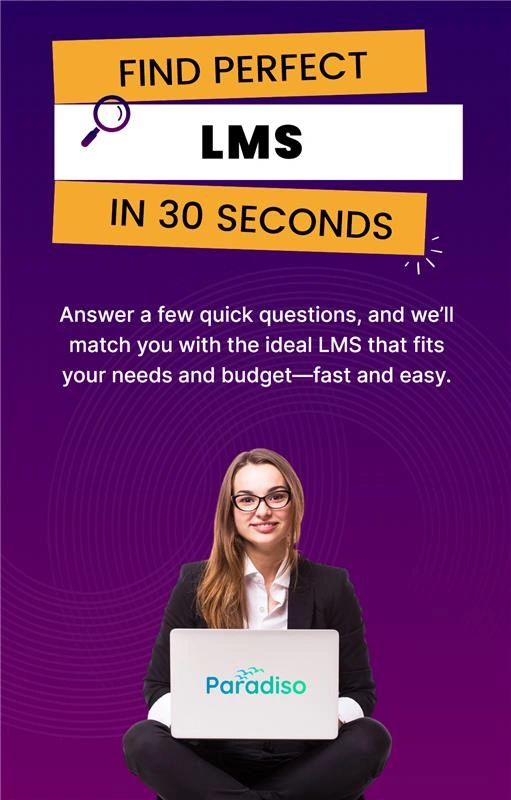Introduction: The Need for a Modern Approach to Corporate Training
In today’s fast-paced and constantly changing business environment, organizations face the challenge of keeping employees’ skills current amidst rapid technological advancements and shifting industry demands. Traditional corporate training methods—such as generic workshops, static curricula, and infrequent in-person sessions—served their purpose in the past but now fall short for modern learners and organizational needs. These outdated approaches often lead to inconsistent knowledge retention, low engagement, and limited scalability.
Fortunately, the landscape of corporate education is transforming through digital innovation and a deeper understanding of effective learning principles. Next-generation Learning Management Systems (LMS) offer features like personalized learning paths, microlearning modules, real-time analytics, and mobile access. These advanced tools enable companies to deliver more engaging, flexible, and measurable training experiences tailored to individual employee needs.
Embracing these modern LMS capabilities is more than just adopting new technology—it’s about strategically transforming corporate learning into a competitive advantage. Organizations seeking agile, scalable, and impactful training solutions are finding that integrating innovative LMS features fosters continuous development, boosts productivity, and helps maintain a competitive edge in an increasingly digital world.
Start Scaling Your L&D Today with Free Tools
Unlock the Potential of Free Tools to Revolutionize Your Learning Strategy!
1. Rethinking Corporate Training: Challenges of the Traditional Model
Traditional corporate training has long been the backbone of employee development, typically involving in-person workshops, scheduled sessions, and static content delivery aimed at equipping employees with necessary skills. However, as the business landscape becomes more dynamic and technology-driven, the limitations of these conventional methods become increasingly evident, affecting both employee growth and organizational success.
Limitations of Conventional Training Approaches
Engagement Challenges
One major issue with traditional training is low engagement. Classroom sessions often lead to passive participation, where employees listen but don’t actively engage with the material. Research shows adults retain only about 25-60% of information from lectures, mainly due to limited interactivity. A lack of personalization and relevance further reduces motivation, leading to disengagement and poorer learning outcomes.
Scalability Issues
Scaling traditional training across large or dispersed organizations poses logistical and cost challenges. In-person workshops require significant resources—trainers, venues, and materials—and making sure the content is consistent across multiple locations increases complexity. These hurdles can cause delays in workforce development and skill enhancement.
Relevance and Adaptability Concerns
Training content in traditional settings can quickly become outdated due to fast-changing industries. Static materials like printed manuals and fixed sessions are costly and slow to update, leading to employees receiving outdated information that diminishes training effectiveness and can undermine compliance, safety, and productivity.
These challenges highlight the need for more flexible, engaging, and up-to-date training solutions. Modern e-learning platforms and digital tools address these limitations, enabling continuous learning and rapid skill development aligned with evolving organizational goals.
Impact on Employee Growth & Business Success
Ineffective training hampers employee development, reduces motivation, and limits career growth. When training feels irrelevant or inaccessible, engagement declines, leading to higher turnover and lower productivity. On the business side, inability to rapidly upskill hampers innovation, erodes competitive advantage, and increases operational risks.
The Need for a Modernized Approach
Given these hurdles, enterprises are increasingly turning to innovative solutions like e-learning platforms, mobile learning, and blended training models that facilitate interactivity, personalization, and scalability. Leveraging technology overcomes old barriers, promotes ongoing learning, and aligns employee development with strategic objectives.
In conclusion, rethinking corporate training is essential for meeting modern workforce demands. Moving beyond traditional methods enhances engagement, scales efficiently, and keeps organizations relevant—driving sustained success.
1.1 Limitations of Conventional Training Methods
Conventional corporate training—often involving instructor-led classes, printed manuals, and static presentations—faces significant hurdles that inhibit effective learning and growth. These limitations affect the learner experience and the overall efficiency of training efforts.
Low Learner Engagement
Maintaining high engagement levels in traditional training is challenging. Passive teaching methods like lectures and slideshows tend to fail at capturing attention, resulting in lower retention. A 2021 study revealed only 25% of employees felt actively engaged during such sessions. This disengagement leads to decreased motivation, limited practical application, and a lower return on investment (ROI).
Challenges in Scaling Training Programs
Expanding traditional training to large or geographically dispersed teams presents logistical and financial challenges. Organizing in-person events for hundreds or thousands requires significant resources, including trainers and venues. Ensuring consistent delivery across locations becomes complex, creating skill gaps and performance inconsistencies.
Rapid Obsolescence of Content
Speed of industry change means static content can quickly become outdated. Printed materials or scheduled sessions are costly to update, leading to employees receiving outdated information, which diminishes training effectiveness and can harm compliance, safety, and productivity. Outdated content also risks damaging learners’ trust in the training program.
These issues underscore the need for flexible, engaging, and current training options. Digital platforms and e-learning tools can effectively address these shortcomings, enabling more responsive and relevant training models.
1.2 The Impact on Employee Development & Business Growth
Outdated training hampers the capacity to foster employee growth and achieve sustainable business expansion. When training relies on static, one-size-fits-all formats—such as monotonous lectures and outdated content—employee engagement drops, skills are not effectively developed, and motivation wanes. This limits innovation and adaptability in a rapidly changing market.
Traditional methods often lack personalization and flexibility, resulting in knowledge gaps and technology paralysis. Companies investing in modern, blended approaches—combining e-learning, virtual simulations, and gamification—see higher retention and faster skill acquisition.
Furthermore, isolated training methods inhibit innovation, as organizations struggle to embed continuous learning and knowledge sharing. They also risk losing competitive advantages if employees are not adequately prepared for emerging challenges.
In sum, outdated training methods constrain growth and innovation. Transitioning to engaging, digital, and personalized learning approaches creates strategic advantages by accelerating development, fostering innovation, and enabling organizations to adapt swiftly.
🚀 Ready to See Paradiso LMS in Action?
Let’s show you how Paradiso LMS can work for you.
2. Unlocking the Power of Next-Gen Free LMS Features
Modern LMS platforms are transforming from basic content repositories into powerful, interactive learning environments that foster engagement, personalization, and measurable outcomes. The best part? Many of these next-generation features are available for free, making sophisticated corporate training accessible to organizations of all sizes without hefty investments.
Personalization: Tailoring Learning Experiences to Individual Needs
One of the most impactful advancements is personalization. Adaptive learning algorithms analyze data like prior knowledge, learning styles, and progress to deliver customized content. This targeted approach enhances motivation and retention, making training more effective.
For example, Moodle supports plugins for adaptive pathways, allowing organizations to create individualized learning plans without extra cost. Personalization aligns training with specific business goals, boosting both learner buy-in and skill development.
Seamless Integration: Connecting with Existing Tools and Systems
Next-gen LMS solutions excel at integrating seamlessly with corporate tools such as HR systems, CRMs, and communication platforms—creating a unified learning ecosystem. Open-source options like Canvas LMS and TalentLMS (which offers free tiers) provide APIs and integration features that automate onboarding, compliance, and content management, reducing manual effort.
This interoperability improves administrative efficiency and elevates the learner experience, ensuring consistent access across systems.
Advanced Analytics: Data-Driven Decision Making for Continuous Improvement
Data analytics empowers organizations to monitor engagement, assessment scores, and completion rates. Dashboards provide instant insights to identify knowledge gaps and measure ROI. Moodle’s analytics tools, for instance, enable real-time learner tracking, helping refine content and delivery.
Using these insights allows ongoing improvements, ensuring training remains relevant, engaging, and aligned with strategic goals.
Social Learning: Fostering Collaboration and Peer Engagement
Social features like forums, chat, and discussion boards facilitate collaborative learning and community building. Platforms like Chamilo and Moodle incorporate these modules to encourage knowledge sharing, peer support, and active participation—crucial for adult learners.
This sense of community boosts motivation, makes learning more practical, and develops teamwork skills in real-world scenarios.
Leveraging these next-gen free LMS features allows organizations to develop dynamic, engaging training environments without significant costs, driving organizational growth and skilled workforces.
2.1 Interactive & Personalization Capabilities
Creating engaging, personalized learning experiences is critical in today’s corporate training landscape. Features such as adaptive learning, gamification, and microlearning make content more relevant, motivating, and effective.
Adaptive Learning: Tailoring Content to Individual Learners
Adaptive learning uses algorithms to customize content based on performance, preferences, and pace. For example, if an employee struggles with a concept, the system might recommend additional tutorials or practice exercises, ensuring mastery before progressing. This approach accelerates skills development and aligns learning with organizational goals.
Gamification: Boosting Engagement Through Game-Like Elements
Gamification introduces points, badges, leaderboards, and challenges to motivate learners. These game elements turn training into a fun, competitive experience, increasing participation and retention. For instance, earning badges for course completion can encourage ongoing engagement.
Microlearning: Delivering Focused, Bite-Sized Content
Microlearning divides complex topics into short, targeted modules, typically 5-10 minutes long. This suits modern learners’ preferences for quick, on-demand content accessible across devices. It also supports just-in-time learning, allowing employees to access relevant information exactly when needed.
Creating Engaging, Learner-Centric Experiences
Combining adaptive learning, gamification, and microlearning results in highly personalized and engaging training. These tools address diverse learning styles, improve satisfaction, and enhance performance. Platforms like Paradiso LMS incorporate these features, supporting scalable, learner-focused training environments.
2.2 Seamless Integration & Mobile Accessibility
In today’s digital work environment, flexible, cloud-based solutions are essential. Seamless integration and mobile access empower organizations to maintain efficient workflows and support remote teams.
Cloud-Based Solutions Supporting Multiple Devices
Cloud LMS platforms can be accessed from any device—desktop, laptop, tablet, or smartphone—anytime and anywhere. This device-agnostic approach ensures employees and managers stay connected without being tied to specific workstations. Gartner reported that over 85% of enterprises adopted cloud solutions for their flexibility and device compatibility.
This multi-device support facilitates real-time collaboration and quick decision-making, essential in competitive markets. For example, sales staff can access client info during meetings, while remote teams update campaigns seamlessly.
Easy Integration with Existing Tools
Modern systems support standard protocols like SCORM and xAPI, ensuring content compatibility. They also offer APIs and open data formats for integration with HRMS, CRM, or ERP systems, streamlining workflows. These integrations reduce manual effort and eliminate redundant data entry, increasing efficiency and data accuracy.
Benefits of Flexible Access and Streamlined Workflows
Remote access boosts productivity and supports remote work initiatives. Managers can oversee operations from any location, ensuring continuity. Core integrations automate data sync, notifications, and reporting, providing real-time insights and faster decisions.
Overall, cloud support and system integration create a resilient foundation for modern business operations. Solutions like Paradiso LMS exemplify these capabilities, enabling flexible, efficient learning and management processes.
2.3 Data-Driven Insights & Real-Time Analytics
In the digital age, leveraging data insights and real-time analytics is vital for optimizing training programs and boosting organizational performance. Collecting and analyzing data on learner activity as it happens provides immediate visibility into engagement, progress, and training impact, fueling informed decision-making.
Real-Time Data Collection
Capturing key metrics like completion rates, assessment scores, and time spent enables swift identification of learners needing support. For example, analytics may reveal disengagement during specific modules, prompting content review or instructional adjustments.
Analytics for Continuous Improvement
Advanced LMS dashboards evaluate training outcomes, highlighting successful components and areas needing attention. Correlation analyses can show which content leads to better performance, informing content development and delivery strategies. Real-time dashboards make decision-making quick and effective.
Data-driven insights support adaptive learning—adjusting content delivery based on ongoing performance data. This personalization increases motivation and retention. Moreover, aligning training to strategic goals becomes easier when organizations monitor key metrics continually.
Creating a Responsive, Agile Learning Environment
Continuous monitoring and evaluation foster a culture of agility. As insights guide improvements, organizations can adapt swiftly to new skills, industry shifts, or technology updates. Platforms like Paradiso LMS provide analytics tools that facilitate these ongoing enhancements, ensuring learning remains relevant and impactful.
2.4 Social Learning & Collaborative Tools
Fostering peer-to-peer interaction and community engagement is critical for effective digital learning. Social learning and collaboration tools create vibrant learning cultures that promote knowledge sharing, motivation, and active participation.
Enhancing Engagement Through Peer Interaction
Tools like discussion forums, chat, and social media integrations facilitate real-time and asynchronous dialogue among learners. These features help learners ask questions, share insights, and explore complex topics, deepening understanding through diverse perspectives.
Building a Learning Community
Community features—like learner profiles, groups, and networking spaces—foster a sense of belonging. When learners connect over shared interests or goals, motivation increases, and knowledge transfer becomes more effective. Activities like group projects and peer reviews promote collaborative problem-solving and critical thinking.
Knowledge Sharing and Co-Creation
Shared workspaces, wikis, and collaborative documents empower learners to co-create content and contribute to collective knowledge bases. These tools encourage active participation, peer feedback, and practical skill development—preparing learners for real-world teamwork.
Promoting a Culture of Collaboration
Embedding social learning features nurtures a collaborative, innovative environment. Facilitators can implement peer mentorship, recognition programs, and challenges to stimulate ongoing interaction. Such an environment boosts learning outcomes and prepares employees for team-oriented work settings.
3. How These Features Foster a Dynamic Learning Environment
Implementing next-gen LMS features transforms traditional training into engaging, immersive experiences that motivate learners and support continuous development. Modern functionalities help build environments where learning is active, rewarding, and aligned with organizational goals.
Engaging and Interactive Learning Experiences
Features like multimedia content, gamification, and social tools create stimulating training. Quizzes, simulations, and discussion forums encourage active participation. According to Talented Learning, gamified environments increase engagement by up to 60%, improving retention and motivation.
Personalized Learning Paths and Adaptive Content
AI-driven recommendations and adaptive content delivery tailor experiences to individual needs. Learners receive relevant modules based on role, skill gaps, and goals—accelerating skills and boosting confidence.
Real-Time Feedback and Performance Tracking
Analytics and instant assessments enable learners to gauge progress and identify improvement areas quickly. Immediate feedback reinforces learning, fostering a growth mindset.
Facilitating Collaboration and Community Building
Discussion boards, peer reviews, and collaborative projects encourage sharing, teamwork, and active knowledge building. These features foster a vibrant learning culture that enhances satisfaction and retention.
Supporting a Culture of Continuous Learning
Microlearning, mobile access, and ongoing content updates embed learning into daily routines. Recognizing and rewarding participation further reinforces lifelong learning—driving innovation and resilience.
3.1 Enhancing Learner Engagement & Motivation
Boosting learner enthusiasm is vital, especially in digital environments. Gamification and personalized content are powerful strategies for elevating engagement and sustained motivation.
The Role of Gamification in Learning Engagement
Gamification applies game mechanics—points, badges, leaderboards, challenges—to training. Research shows it can increase motivation by up to 34% and improve retention. Such features tap into learners’ competitive spirit and desire for achievement, making learning more enjoyable.
In corporate settings, earning badges or climbing leaderboards encourages continual participation. Gamification creates a sense of accomplishment and progress, motivating employees to complete modules diligently.
The Impact of Personalized Content on Learner Engagement
Personalized learning tailors content to individual preferences and prior knowledge. Studies demonstrate this increases motivation, relevance, and effort. Adaptive systems dynamically modify content difficulty, reducing boredom and frustration, and promoting mastery.
Combining Gamification and Personalization for Optimal Outcomes
Integrating gamification with personalized pathways produces a synergetic effect, maintaining optimal challenge and providing tailored incentives. For example, struggling learners might unlock hints or extra practice options upon reaching milestones.
This blend results in higher completion rates, better retention, and more motivated learners—key for scalable, effective corporate training.
3.2 Accelerating Skill Development & Retention
Quick skill development and long-term knowledge retention are crucial in today’s fast-paced workplaces. Microlearning modules serve as an effective method to meet this need by delivering concise, targeted content that adapts to individual learning paths.
Leveraging Microlearning for Rapid Skill Acquisition
Microlearning breaks complex topics into short, focused modules—often 5-10 minutes long—making content easier to absorb. Studies show it enhances engagement and accelerates learning curves by providing immediately applicable content. For example, a sales team might receive a quick update on CRM features via a five-minute video, allowing instant application.
Personalized Learning Pathways Enhance Effectiveness
Customization via adaptive tools creates individualized learning journeys based on existing skills and future goals. Personalized modules yield higher retention, as learners focus on relevant content, boosting motivation and performance.
Techniques for Promoting Long-Term Retention
Effective retention strategies include spaced repetition and retrieval practice—short quizzes, periodic refreshers, and application exercises, which embed skills into long-term memory. Research shows that regular review substantially improves long-term retention.
Integrating Targeted Modules into Broader Ecosystems
Embedding microlearning content into LMS, mobile apps, and performance tools supports just-in-time learning. This integration helps employees access relevant content when needed, accelerating growth and operational excellence.
3.3 Cultivating a Culture of Continuous Learning
*Fostering a learning-oriented culture is key in today’s dynamic business environment.* Accessible, flexible LMS platforms promote self-directed growth and ongoing development.
The Importance of a Learning-Centric Culture
Such a culture emphasizes continuous knowledge enhancement as core to organizational success. It motivates employees to seek new skills, stay current, and adapt to change—building a resilient, innovative workforce.
How Flexible LMS Platforms Facilitate Self-Directed Learning
Modern LMS solutions are user-friendly and adaptable. Features like on-demand content, mobile access, and personalized paths allow employees to learn at their convenience. Examples include self-paced modules, microlearning bursts, and gamification elements that make learning routine.
Supporting Ongoing Professional Development
An accessible LMS offers valuable resources—updated content, webinars, communities—that encourage continuous growth. Analytics and performance tracking help managers identify gaps and tailor future initiatives.
Creating a Sustainable Learning Environment
Leadership endorsement, recognition programs, and integrating learning into performance reviews reinforce the importance of development. Promoting social learning and rewarding participation help embed the mindset of lifelong learning, fostering innovation and resilience.
Strategic planning—offering diverse resources, setting personal goals, encouraging collaboration, and rewarding progress—accelerates organizational learning culture, directly impacting innovation and competitiveness.*
4. Practical Steps to Transition to a Next-Gen LMS Ecosystem
Shifting to a next-gen LMS is a strategic investment that enhances training effectiveness. A structured, step-by-step approach ensures a smooth migration, maximizing benefits and minimizing disruptions.
Assessing Training Needs and Goals
The first step involves thoroughly analyzing current training programs and identifying gaps. Collect feedback, review performance metrics, and understand organizational objectives to set clear goals. Clarify what improvements are desired—such as increased engagement, mobile access, or customized paths—and focus the selection process accordingly.
Selecting the Right LMS Platform
Choose a platform aligned with your objectives by considering features like user experience, scalability, integration options, and support for emerging technologies. Platforms like Paradiso LMS exemplify capabilities like AI personalization, gamification, and seamless integrations, making them future-ready options.
Planning for a Seamless Transition
Develop a detailed project plan—including timelines, responsibilities, and data migration strategies. Communicate changes clearly to stakeholders and users, providing training on new features. Testing and piloting before full deployment help catch issues early.
Ensuring Training and Adoption
Maximize uptake with onboarding sessions, tutorials, and ongoing support. Identify champions within teams to promote benefits. Use interactive features like microlearning and social tools to increase engagement, and gather feedback for continuous improvement.
Continuous Measurement and Improvement
Use analytics and feedback loops to monitor adoption, engagement, and learning outcomes. Regularly refine content and strategies based on data, ensuring the LMS evolves with organizational needs. Keep abreast of new platform features and upgrades to maintain cutting-edge training delivery.
Following this roadmap ensures a resilient, scalable, and engaging learning infrastructure. Solutions like Paradiso LMS support this transformation, delivering flexible, comprehensive, and future-proof training ecosystems.
4.1 Assessing Your Organization’s Training Needs
The foundation of a successful LMS transition begins with a comprehensive assessment of your training landscape. Identify gaps, set clear objectives, and align initiatives with business strategies for maximum impact.
Understanding Current Training Gaps
Start by reviewing existing programs through surveys, interviews, and performance data. Recognize outdated content, delivery inefficiencies, or engagement issues. The goal is to pinpoint where skills are lacking, and where training can be optimized to meet evolving demands.
Evaluating Goals and Strategic Alignment
Ensure that training ambitions support broader organizational objectives—such as digital transformation, compliance, or leadership development. Define what success looks like—faster onboarding, higher certification rates, or improved technical skills—and tailor your LMS selection accordingly.
Defining Clear Learning Objectives
Translate gaps into specific, measurable goals. For example, aiming to reduce onboarding time or increase proficiency in specific tools. Clear objectives help identify essential features like progress tracking, personalized pathways, and mobile support in potential LMS options.
Prioritizing Needs Using Data
Leverage existing analytics to highlight critical areas—such as high dropout rates or skill shortages. Prioritize initiatives that yield the highest impact, ensuring your LMS can deliver targeted solutions for these key needs.
Engaging Stakeholders
Involve leadership, HR, and frontline managers in the assessment process. Their insights help define realistic goals and secure buy-in, setting the stage for a successful migration to a next-generation LMS.
4.2 Selecting the Right Next-Gen Free LMS Platform
Choosing the ideal free LMS platform requires aligning features with your organization’s goals, technical environment, and scalability plans. A strategic choice ensures your investment drives engagement, efficiency, and growth.
Aligning Features with Organizational Goals
Determine the key functionalities needed—such as personalized learning, mobile access, social learning, or analytics—and select platforms that support those. For example, Moodle and Canvas are highly customizable and suitable for complex or large-scale deployments.
Considering Budget and Support
Even free solutions may incur costs for setup, customization, or support. Evaluate total ownership—software, hosting, maintenance—and choose options like TalentLMS or Moodle that balance cost with capabilities and community support.
Assessing Technical Compatibility
Ensure the platform integrates smoothly with existing systems—HRMS, CRM, content repositories—and supports standards like SCORM or xAPI. User-friendly interfaces and mobile responsiveness facilitate task adoption and engagement.
Scalability for Growth
Select solutions that can expand with your organization—look for flexible user limits, modular features, and community or open-source models. This foresight prevents costly migrations later.
Making a well-informed choice ensures your LMS supports current needs and future growth, delivering a scalable, cost-effective platform for effective training.
4.3 Implementing and Promoting User Adoption
Transitioning to a new LMS involves strategic planning, user engagement, and ongoing support to maximize adoption and training success. Here are essential strategies:
1. Develop a Clear Implementation Plan
Create phases, timelines, and assign responsibilities. Communicate benefits and progress regularly to all stakeholders, and tailor training to different user groups to ensure ease of use.
2. Facilitate Comprehensive User Training
Offer varied training formats—live sessions, tutorials, manuals—that cater to diverse learning preferences. Focus on core features, course creation, and reporting capabilities to empower users with confidence.
3. Promote Early Engagement & Gather Feedback
Encourage early adopters to act as champions. Use their success stories to motivate others. Collect feedback post-launch to identify hurdles and adapt accordingly.
4. Use Communication & Incentives
Maintain consistent messaging about the LMS’s value through emails, meetings, and intranet updates. Recognize active users and reward engagement to reinforce adoption.
5. Provide Ongoing Support & Resources
Establish help desks, FAQs, and peer support groups. Continue offering training refreshers and advanced sessions. Responsive support helps sustain confidence and usage.
6. Measure & Celebrate Success
Use analytics and feedback to monitor adoption progress. Highlight successes through internal communications, and celebrate milestones to motivate continued engagement.
An organized, communicative, and supportive approach ensures a smooth transition, high adoption rates, and an empowered learning culture. Platforms like Paradiso LMS facilitate these strategies with intuitive tools, support, and engagement features.
4.4 Measuring Success & Iterating for Improvement
Continuous evaluation and improvement are vital to ensure training programs meet organizational goals and adapt to changing needs. Employ a holistic approach combining data, feedback, and adjustments.
Assess Training Effectiveness
Use pre- and post-assessments, performance metrics, completion rates, and behavioral observations. Frameworks like Kirkpatrick’s Four Levels help measure reaction, learning, behavior, and results, providing a comprehensive view.
Gather Learner Feedback
Conduct surveys, interviews, and feedback forms immediately after training. Honest input on content relevance, delivery, and usability guides targeted improvements.
Iterative Improvements
Refine content, update delivery methods, and personalize based on insights. Regular review cycles—quarterly or biannual—keep training aligned with evolving needs and industry trends.
Leverage Data for Strategic Decisions
Utilize LMS analytics dashboards and reports to identify gaps, measure ROI, and inform resource allocation. Data-driven decisions enable responsive, impactful training adjustments.
Embedding continuous evaluation and iteration fosters a learning ecosystem that enhances skills, boosts performance, and ensures training remains relevant and effective—driving long-term organizational success.
5. Paradiso LMS: Your Partner in Next-Gen Corporate Training
Paradiso LMS offers a comprehensive platform designed to meet the demands of modern organizations. Its feature-rich, flexible architecture helps deliver engaging, scalable, and measurable training programs aligned with the latest technological trends.
Harnessing Advanced Features for Modern Training
Paradiso LMS integrates adaptive learning paths, making personalized experiences possible. Its mobile-first design ensures learners can access content from anywhere. Seamless integrations with HRIS, content libraries, and collaborative tools streamline administration and content management—supporting scalable growth.
Reimagine learning – explore the power of a next-gen free LMS today.
Your team deserves better. Transform outdated training with smarter LMS tools – for free.
Success Stories That Demonstrate Impact
Global manufacturing or retail firms have reported significant increases in certification completion and faster onboarding times after deploying Paradiso LMS. These real-world successes highlight the platform’s ability to foster engagement and skill transfer, making it a trusted partner in workforce development.
Flexible, Cost-Effective Solutions Supporting Growth
Paradiso LMS offers tiered pricing and free plans suitable for small teams or pilot projects. As your organization expands, the platform scales effortlessly, with options to add users, courses, and features without disruption. This flexibility ensures long-term ROI and adaptability.
Empowering Future-Ready Enterprises
In a competitive landscape, embracing advanced LMS solutions like Paradiso positions your organization as innovative and resilient. Its capabilities in microlearning, gamification, and AI-driven analytics support continuous growth and skill mastery—driving sustained success now and into the future.
Choosing Paradiso LMS means choosing a partner dedicated to elevating your corporate training to future-proof levels.
Conclusion: Embrace the Future of Corporate Learning
The modern business environment demands innovative, adaptable, and engaging training solutions. Traditional methods no longer suffice to develop all employees effectively or keep pace with industry changes. Embracing next-generation LMS platforms—equipped with personalization, mobile access, social learning, analytics, and seamless integrations—can transform corporate education into a strategic driver of growth.
Organizations that invest now in scalable, technology-driven training are positioned to outperform competitors, attract top talent, and adapt swiftly to change. Platforms like Paradiso LMS exemplify the future-ready solutions essential for sustaining a competitive edge in the digital age.
Adopt a forward-thinking approach today, and unlock the full potential of your workforce with innovative, impactful corporate training—and secure long-term success in a rapidly evolving world.

















